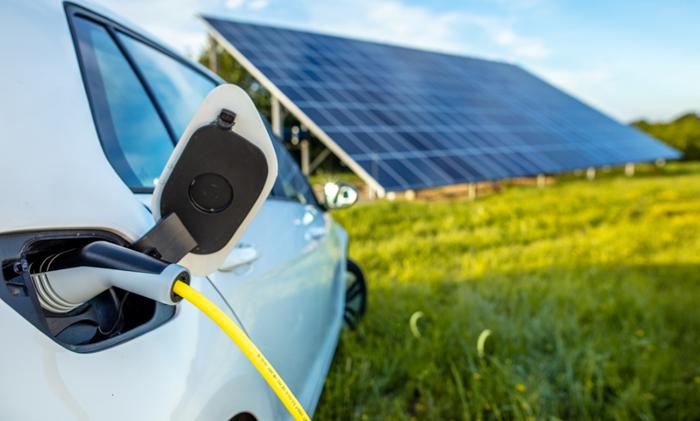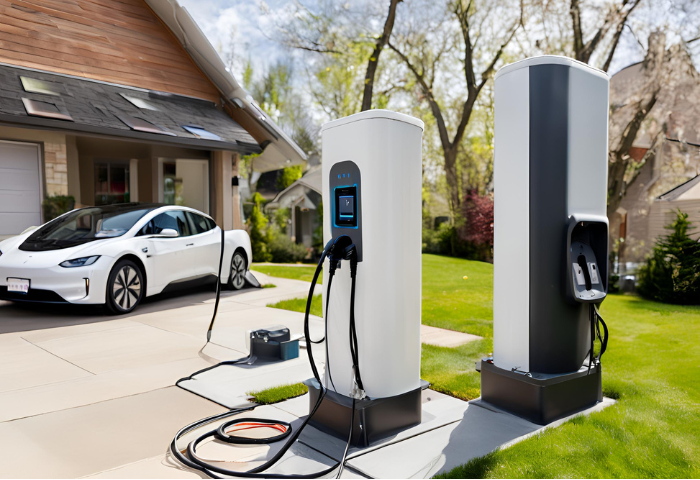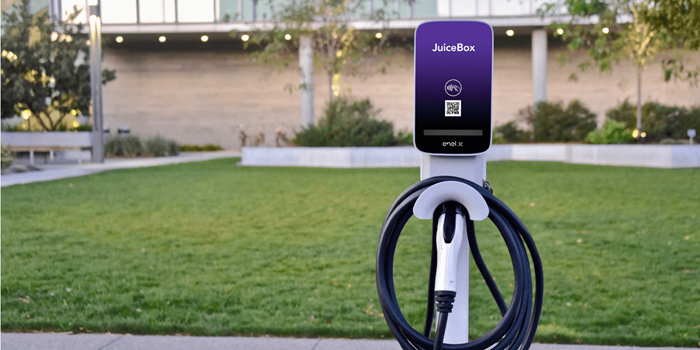Powering Up the Future: Top EV Charger Companies to Watch
The electric vehicle (EV) charging industry is rapidly growing as more and more people switch to electric cars. This has led to a surge in the number of companies developing and manufacturing EV chargers.
Leading EV Charger Companies

Several companies produce electric vehicle (EV) chargers, catering to various needs and markets. Here are some prominent ones as of my last update:
Tesla: Tesla is well-known for its Supercharger network, which is designed specifically for Tesla vehicles. They also offer home chargers called Tesla Wall Connectors.
ChargePoint: ChargePoint operates one of the largest networks of EV charging stations globally. They provide solutions for home, business, and public charging.
EVBox: EVBox offers a range of EV charging solutions, including home chargers, business chargers, and public charging stations. They operate in various regions globally.
ABB: ABB is a multinational corporation that provides various electrical equipment, including EV charging solutions. They offer a range of charging stations for both residential and commercial use.
JuiceBox: JuiceBox is known for its smart EV charging solutions for homes and businesses. Their chargers can be controlled and monitored via a mobile app.
Bosch: Bosch provides EV charging solutions for both residential and commercial use. They offer wall-mounted chargers as well as solutions for parking garages and fleet charging.
Siemens: Siemens offers a range of EV charging solutions, including home chargers, workplace chargers, and public charging stations. They focus on providing an efficient and scalable charging infrastructure.
Webasto: Webasto offers a range of EV charging solutions, including home chargers and commercial chargers. They focus on providing reliable and user-friendly charging solutions.
ClipperCreek: ClipperCreek specializes in residential and commercial EV charging solutions. They offer a variety of charging stations with different power levels to suit various needs.
Pod Point: Pod Point provides EV charging solutions for homes, workplaces, and public locations. They offer smart charging solutions that can be managed remotely.
Types of EV Chargers
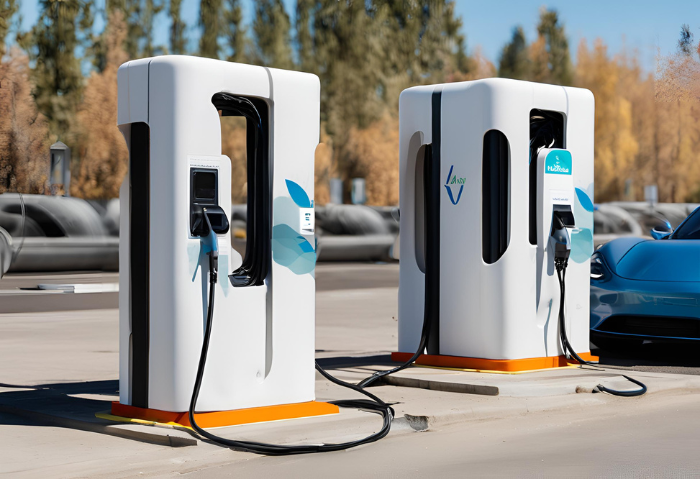
There are several types of electric vehicle (EV) chargers available, each with its own characteristics and use cases. Here are the main types:
Level 1 Chargers
These chargers use a standard 120-volt AC household outlet and are typically included with electric vehicles. They provide the slowest charging rate, suitable for overnight charging at home.
Level 2 Chargers
Level 2 chargers use a 240-volt AC power source, which is similar to what electric clothes dryers and stoves use. They provide faster charging than Level 1 chargers and are commonly installed in homes, workplaces, and public charging stations. Level 2 chargers can fully charge most EVs overnight.
DC Fast Chargers (DCFC)
DC fast chargers are high-powered chargers that can deliver DC electricity directly to an EV’s battery. They are capable of providing rapid charging, significantly reducing charging times compared to Level 1 and Level 2 chargers. DC fast chargers are typically found along highways, in commercial areas, and at EV service stations.
CHAdeMO: Japanese companies developed CHAdeMO, one of the first DC fast charging standards. Japanese and some European EV manufacturers frequently use it.
Combined Charging System, or CCS, is a fast charging standard that many automakers in Europe and America have implemented. It combines AC and DC charging into a single connector, allowing for faster charging speeds.
Tesla Superchargers: Tesla Superchargers are proprietary fast chargers designed specifically for Tesla vehicles. They use a unique connector and are only compatible with Tesla cars.
Wireless Chargers
Wireless EV chargers use inductive charging technology to transfer power to the vehicle without the need for a physical cable connection. These chargers require compatible vehicles equipped with wireless charging capabilities and are primarily used in home and commercial settings.
Portable Chargers
Portable EV chargers are compact and lightweight units that can be carried in the trunk of an EV. They typically plug into a standard electrical outlet and are useful for emergency charging situations or when traveling.
EV Charger Network Infrastructure
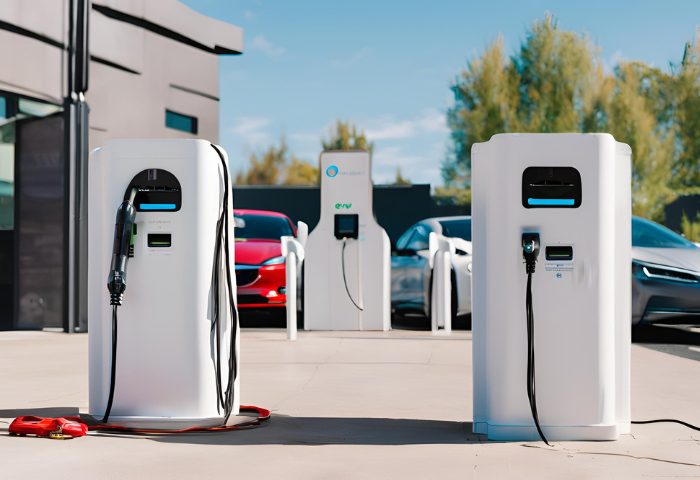
The infrastructure supporting electric vehicle (EV) charging networks is crucial for the widespread adoption of electric vehicles. Here are the key components of EV charger network infrastructure:
Charging Stations
Charging stations are the physical locations where EV owners can plug in their vehicles to recharge the battery. These stations come in various types, including Level 1, Level 2, and DC fast chargers. Charging stations are installed in diverse locations, such as homes, workplaces, commercial areas, parking lots, and along highways.
Grid Connection
EV charging stations require a connection to the electrical grid to supply power. The grid infrastructure must be robust enough to handle the increased demand for electricity from charging stations, especially during peak periods. Upgrades to the grid may be necessary to support widespread EV adoption.
Network Management Software
Network management software is used to monitor and control charging stations remotely. It allows operators to track charging sessions, manage payments, perform diagnostics, and optimize charging infrastructure usage. This software helps ensure the efficient operation of charging networks and provides a seamless experience for EV owners.
Payment Systems
EV charging networks often incorporate payment systems to enable users to pay for charging services. These systems can include RFID cards, mobile apps, credit card readers, or other forms of payment. Standardized payment methods and interoperability between different charging networks are essential for user convenience.
Roaming Agreements
Roaming agreements allow EV owners to access charging stations operated by different networks using a single account or payment method. These agreements facilitate interoperability and make it easier for EV owners to find and use charging stations, regardless of the network operator.
Smart Grid Integration
Smart grid technologies enable bidirectional communication between EV chargers and the grid. This integration allows for demand response, load balancing, and optimization of charging schedules to minimize grid stress and maximize the use of renewable energy sources.
Site Selection and Planning
Planning the locations of charging stations is critical to ensuring adequate coverage and accessibility for EV owners. Factors such as proximity to major highways, population centers, public transportation hubs, and amenities influence site selection decisions.
Maintenance and Support Services
Regular maintenance and support services are necessary to keep charging stations operational and address any issues that may arise. Service providers must have procedures in place for monitoring equipment health, performing repairs, and responding to user inquiries or emergencies.
EV Charger Installation Process
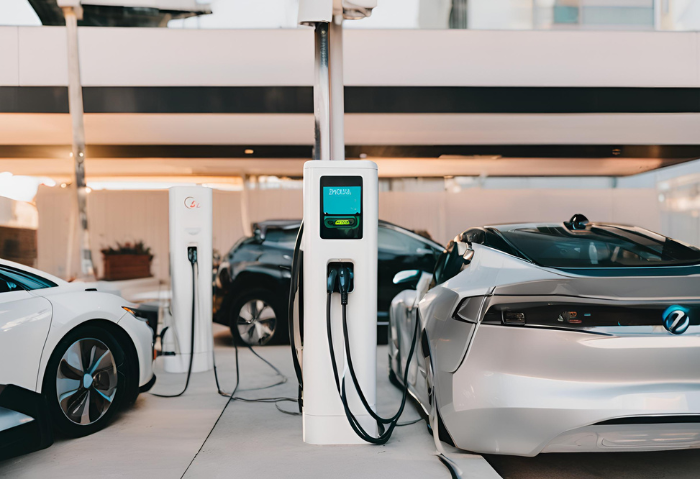
The installation process for an electric vehicle (EV) charger typically involves several steps, which may vary depending on factors such as the type of charger, location, and local regulations. Here’s a general outline of the EV charger installation process:
Assessment and Planning
Determine the type of EV charger needed based on the vehicle’s requirements and charging habits (e.g., Level 1, Level 2, or DC fast charger).
Assess the location for installation, considering factors such as proximity to the electrical panel, parking space accessibility, and any necessary permits or approvals.
Site Preparation
Clear the installation area of any obstructions and ensure sufficient space for the charger and associated equipment.
Determine the routing of electrical cables and ensure compliance with building codes and safety regulations.
Electrical Assessment
Conduct an electrical assessment to determine the capacity of the existing electrical panel and whether any upgrades or modifications are required to support the EV charger installation.
Calculate the electrical load requirements for the charger and ensure that the electrical system can accommodate it safely.
Permitting and Approvals
Obtain any necessary permits or approvals from local authorities, building management, or homeowner associations.
Ensure compliance with local building codes, zoning regulations, and electrical codes.
Equipment Procurement
Purchase the EV charger and any additional equipment needed for installation, such as mounting hardware, conduit, wiring, and circuit breakers.
Ensure that the charger is compatible with the vehicle and meets safety and performance standards.
Installation
Mount the EV charger securely to the wall or pedestal according to manufacturer guidelines and specifications.
Install conduit, wiring, and electrical components to connect the charger to the electrical panel.
Follow proper electrical wiring procedures, including grounding and insulation, to ensure safety and compliance with regulations.
Testing and Commissioning
Conduct thorough testing of the EV charger and electrical connections to ensure proper installation and functionality.
Verify that the charger is charging the vehicle correctly and that all safety features are working as intended.
Documentation and User Training
Provide documentation, user manuals, and warranty information to the EV owner.
Offer training on how to use the charger safely and effectively, including instructions for plugging in, initiating charging sessions, and monitoring charging status.
Post-Installation Support
Offer ongoing support and maintenance services to address any issues or questions that may arise after installation.
Ensure that the EV owner knows how to contact support for assistance or troubleshooting.
EV Charger Software and Applications
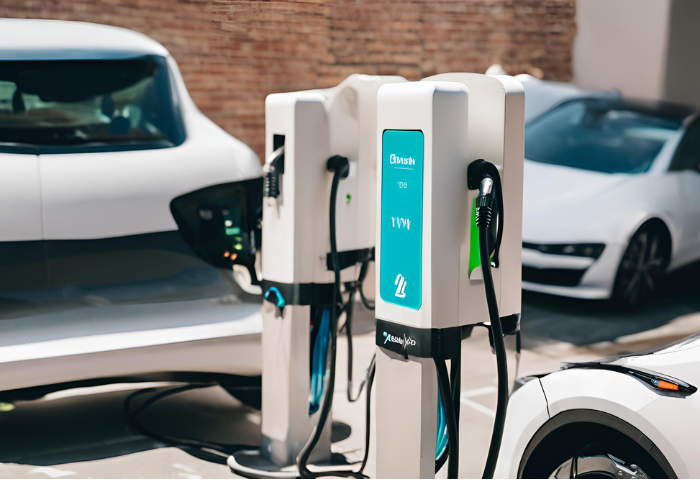
Electric vehicle (EV) charger software and applications play a crucial role in managing charging infrastructure, providing a seamless user experience, and optimizing charging operations. Here are some key aspects of EV charger software and applications:
Charging Station Management Software
This software enables operators to monitor, control, and manage charging stations remotely. It includes features such as:
- Monitoring charging status and availability.
- Managing user accounts, payments, and billing.
- Diagnosing and troubleshooting charging station issues.
- Updating firmware and software remotely.
Mobile Apps for EV Owners
Mobile applications allow EV owners to find charging stations, initiate charging sessions, monitor charging progress, and manage their accounts. Key features may include:
- Locating nearby charging stations on a map.
- Checking station availability and compatibility.
- Starting, pausing, or stopping charging sessions remotely.
- Tracking charging history and usage.
- Setting up payment methods and managing billing.
Payment and Billing Integration
EV charger software integrates with payment systems to enable secure and convenient transactions for charging services. It supports various payment methods, including:
- Credit/debit cards.
- Mobile payment platforms (e.g., Apple Pay, Google Pay).
- RFID cards or key fobs.
- Subscription-based payment plans.
Reservations and Scheduling
Some EV charger applications allow users to reserve charging stations in advance or schedule charging sessions for a specific time. This feature helps manage demand, reduce waiting times, and ensure access to charging facilities when needed.
Energy Management and Optimization
Advanced EV charger software incorporates energy management algorithms to optimize charging operations and minimize grid impact. It may include features such as:
- Load balancing to distribute charging load evenly across multiple stations.
- Demand response to adjust charging rates based on grid conditions or utility signals.
- Integration with smart grid technologies for bidirectional communication and dynamic pricing.
Fleet Management Tools
For businesses or organizations with fleets of electric vehicles, specialized software provides fleet management capabilities, including:
- Monitoring fleet charging activity and usage patterns.
- Managing access controls and permissions for drivers.
- Generating reports on energy consumption, cost savings, and environmental impact.
- Integrating with fleet management systems for vehicle tracking and maintenance scheduling.
Open APIs and Integration
Many EV charger software platforms offer open APIs (Application Programming Interfaces) to facilitate integration with third-party applications and services. This allows developers to create custom solutions, integrate with existing systems, and enhance the functionality of EV charger networks.
Innovative EV Charger Technologies
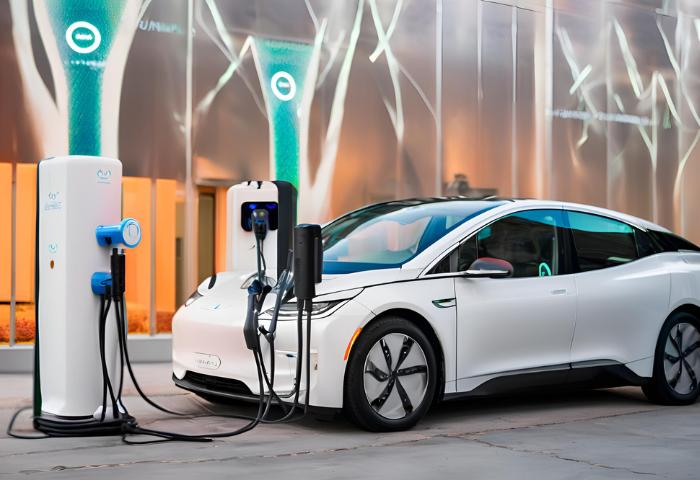
Several innovative technologies are being developed and implemented to improve electric vehicle (EV) charging infrastructure. Here are some notable examples:
Ultra-fast charging
Companies are working on ultra-fast charging solutions that can significantly reduce charging times. This includes technologies like high-power charging stations capable of delivering hundreds of kilowatts of power, enabling EVs to charge to 80% capacity in just a matter of minutes.
Bidirectional charging (Vehicle-to-Grid, or V2G)
Bidirectional charging allows EVs not only to draw power from the grid but also to feed power back into it. This is particularly useful for grid stabilization, load balancing, and leveraging EV batteries as energy storage devices during peak demand periods.
Wireless charging
Wireless charging eliminates the need for physical cables, making the charging process more convenient and efficient. Inductive charging pads installed in parking spaces or embedded in roadways can automatically charge EVs when parked or even while driving, improving overall user experience.
Smart charging algorithms
Advanced algorithms and machine learning are being employed to optimize charging schedules based on factors such as electricity prices, grid demand, and individual user preferences. These algorithms can minimize charging costs for consumers while maximizing grid efficiency.
Battery-swapping stations
Instead of waiting for a vehicle to charge, battery-swapping stations allow EVs to quickly exchange depleted batteries for fully charged ones, reducing downtime significantly. This concept is particularly popular in countries like China, where companies are piloting large-scale battery-swapping networks.
Solar-powered charging stations
Integrating solar panels into charging infrastructure allows EVs to be charged using renewable energy sources, reducing their carbon footprint further. Some setups even incorporate energy storage systems to provide charging during periods of low solar generation or at night.
Modular charging infrastructure
Modular charging solutions offer flexibility and scalability, allowing charging stations to be easily expanded or relocated as demand grows or shifts. This adaptability is crucial for accommodating the rapidly evolving EV market.
Blockchain-based payment systems
Blockchain technology can streamline payment processes for EV charging, enabling secure and transparent transactions without the need for intermediaries. This can lower transaction costs and increase accessibility to charging infrastructure.
EV Charger Maintenance and Upkeep
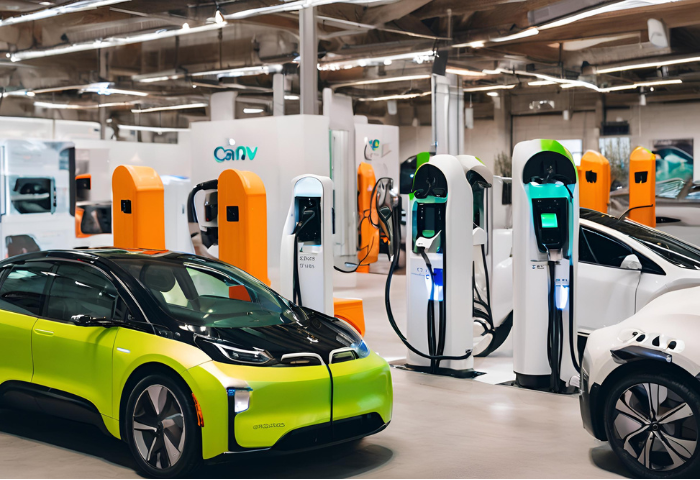
Maintaining and managing EV charger infrastructure is essential to ensuring reliable operation and maximizing user satisfaction. Here are some key aspects of EV charger maintenance and upkeep:
Regular inspections: Conduct routine inspections of charging stations to identify any signs of wear and tear, damage, or malfunction. This includes checking cables, connectors, screens, and other components for physical damage or corrosion.
Cleaning and upkeep: Keep charging stations clean and free of debris to maintain optimal performance and ensure user safety. Regularly clean charging connectors to remove dirt, dust, and debris that can accumulate and interfere with charging.
Software updates: Stay up-to-date with software updates provided by charger manufacturers or service providers. These updates may include bug fixes, security patches, and performance improvements to enhance the functionality and reliability of charging stations.
Remote monitoring: Utilize remote monitoring and management systems to track the performance and status of charging stations in real-time. This allows operators to quickly identify and address any issues, such as connectivity problems or charging failures, without the need for on-site intervention.
Preventive maintenance: Implement a preventive maintenance schedule to address potential issues before they escalate into major problems. This may involve replacing worn-out components, lubricating moving parts, and performing system checks to ensure everything is functioning correctly.
Emergency response planning: Develop protocols and procedures for responding to emergencies or unexpected events, such as power outages, equipment failures, or vandalism. Ensure that staff are trained to handle these situations effectively and have access to necessary resources and support.
User support and feedback: Provide user support services to assist EV drivers with charging-related issues or questions. Collect feedback from users to identify areas for improvement and address any concerns or complaints promptly.
Accessibility and compliance: Ensure that charging stations are accessible to all users, including those with disabilities, and comply with relevant regulations and standards, such as ADA requirements. Regularly audit charging infrastructure to verify compliance and address any accessibility barriers.
Policies and Regulations Impacting EV Charger Companies
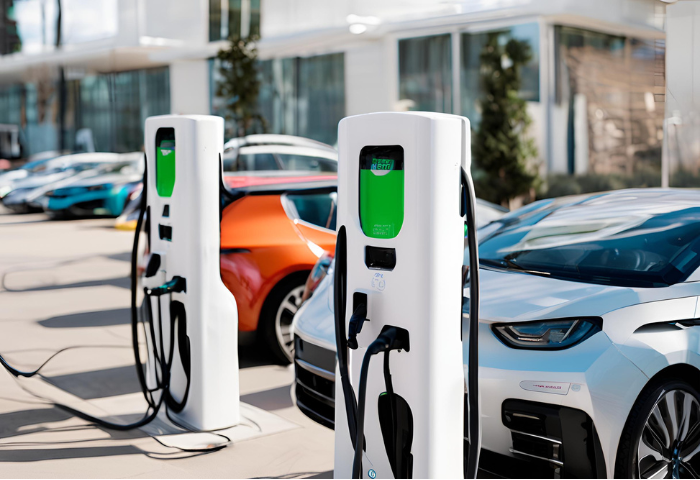
Policies and regulations play a significant role in shaping the landscape for electric vehicle (EV) charger companies. Here are some key policies and regulations that impact EV charging companies:
Building Codes and Zoning Regulations: Building codes and zoning regulations can influence the installation and placement of EV charging stations. These regulations may dictate requirements for parking lot design, electrical infrastructure, and accessibility standards for EV charging facilities.
Utility Regulations: Utility regulations can affect the cost structure and deployment of EV charging infrastructure. Policies related to electricity pricing, demand charges, and interconnection requirements can impact the economics of operating charging stations and the ability of EV charger companies to scale their business.
Incentives and Subsidies: Government incentives and subsidies can incentivize the deployment of EV charging infrastructure. This includes grants, tax credits, and rebates for installing charging stations, as well as funding programs to support research and development of charging technologies.
Fueling Infrastructure Standards: Standards and regulations governing EV charging infrastructure can impact interoperability, safety, and consumer confidence. Regulatory bodies may establish standards for connector types, communication protocols, and cybersecurity to ensure compatibility and reliability across different charging networks.
Environmental Regulations: Environmental regulations, such as emissions standards and clean air policies, can drive the adoption of electric vehicles and the expansion of charging infrastructure. Governments may implement mandates or targets for reducing greenhouse gas emissions from transportation, spurring investment in EV charging technologies.
Vehicle-to-Grid (V2G) Regulations: Policies related to vehicle-to-grid (V2G) technologies can impact the integration of EVs into the electricity grid. Regulations governing grid interaction, energy market participation, and compensation mechanisms for V2G services can influence the business models of EV charger companies and their collaboration with utilities.
Data Privacy and Security Regulations: Data privacy and security regulations govern the collection, storage, and sharing of information from EV charging transactions. Companies must comply with regulations related to customer data protection, cybersecurity, and data sharing practices to ensure consumer trust and regulatory compliance.
Accessibility and Equity Policies: Policies aimed at promoting accessibility and equity in transportation can impact the deployment of EV charging infrastructure. Governments may implement programs to ensure equitable access to charging stations in underserved communities and prioritize investments in areas with limited access to clean transportation options.
Navigating these policies and regulations requires EV charger companies to stay informed, engage with policymakers and regulatory agencies, and adapt their strategies to comply with evolving requirements while seizing opportunities for growth and innovation in the rapidly expanding EV market.
By navigating regulatory landscapes, embracing technological advancements, and fostering partnerships, EV charger companies are facilitating the widespread adoption of electric vehicles. Their efforts not only support environmental sustainability by reducing emissions but also contribute to economic growth, job creation, and energy resilience.

Henry Michael is a leading expert in EV charging station research, specializing in innovative solutions for electric vehicle infrastructure. With a passion for sustainability and technological advancement, he is dedicated to advancing the accessibility and efficiency of EV charging worldwide.

